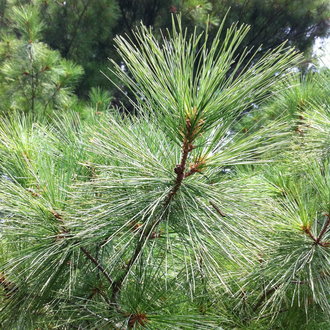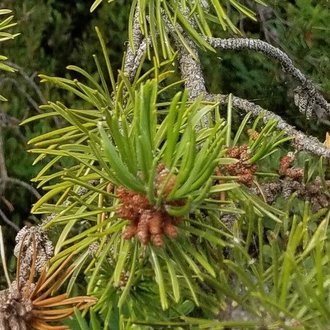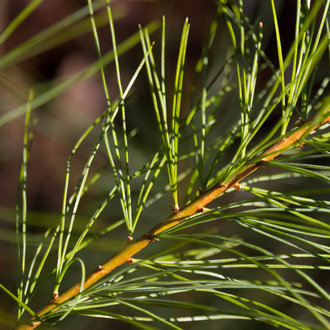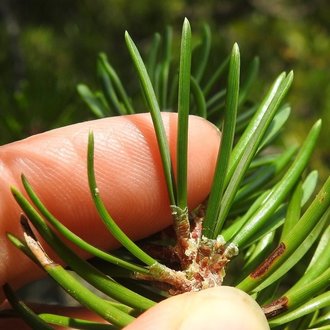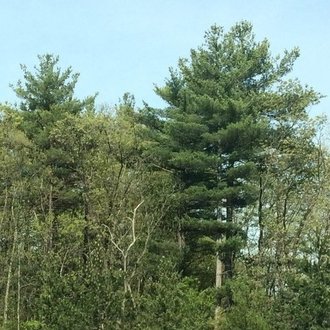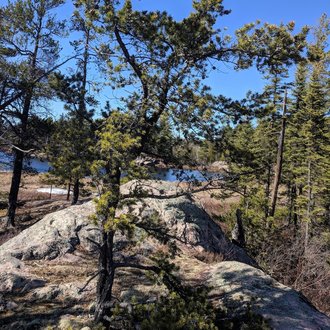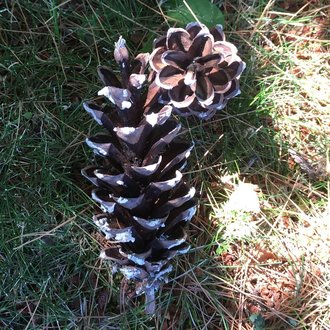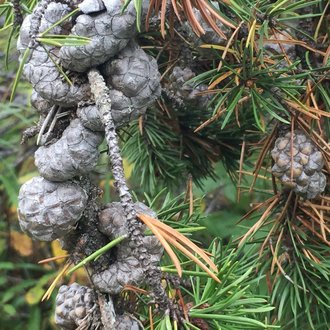Eastern White Pine vs Jack Pine
This guide is under construction and has not been published yet. It may have errors. When in doubt, double-check other sources for definitive ID.These pines are sometimes confused because their ranges overlap, but they are quite dissimilar and easy to tell apart. They also occupy opposite extremes of habitat, among pines.
Eastern White Pine (Pinus strobus) | Jack Pine (Pinus banksiana) |
A common native pine of the northeast, Eastern White Pine is the tallest tree in the east, and more shade-tolerant than most pines. | A fire-adapted pine with a northerly distribution in North America, the densest parts of its range in Canada, northern New England, and the upper midwest. |
Foliage bluish and looks fine-textured at a glance, because of the long, narrow needles. Photo © Charlie Inyo, CC BY 4.0. | Foliage only rarely bluish, usually green or yellow-green. Looks coarse at a glance because of short, stout needles. Photo © Sarah Johnson, CC BY 4.0. |
Needles in groups of five. Photo © pleary, CC BY 4.0. | Needles in groups of two. Photo © Laura Gaudette, CC BY 4.0. |
Often found in forests, tending to occupy the richest habitats where pines are found. Often towers above a canopy of deciduous or mixed forest. Photo © Charlie Hohn, CC BY 4.0. | Found in harsher, more open habitats, such as rocky outcroppings, areas with sandy soil, and areas that are subjected to regular wildfires. Photo © Nate Martineau, CC BY 4.0. |
Cones much larger, at least 8cm (3in) long, usually much longer. Cones open when mature and release seeds without any need for heat. Photo © Helen Linda, CC BY 4.0. | Cones much smaller, up to 2 inches (5cm) long. Mature cones of most trees remain closed and retained on the tree for years, only opening with heat, usually from fire. Photo © Mary Krieger, CC BY 4.0. |
References & External Resources
These short lists show only links helpful for ID. For a complete list of references and resources also covering other aspects of ecology, visit the links section of the full article on each plant, which is the first entry here.



